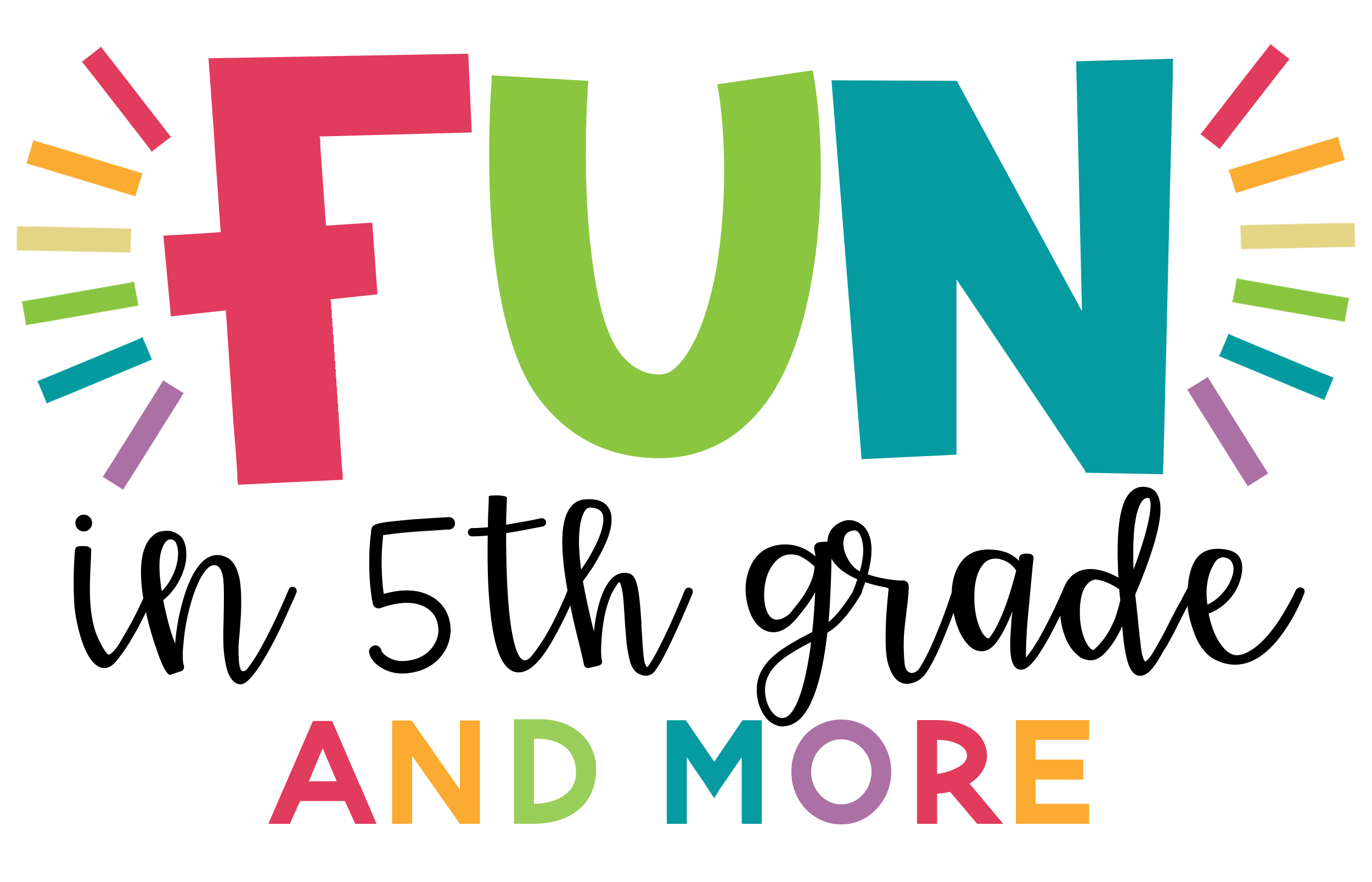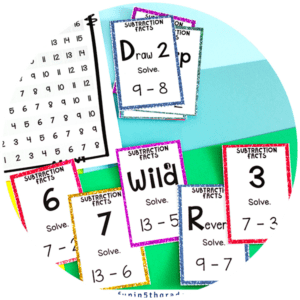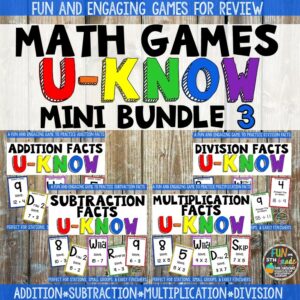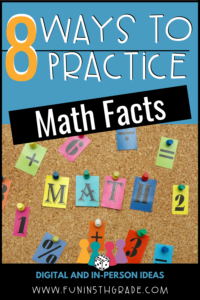
Now, maybe I’m dating myself here, but do you remember the old days when practicing math facts was all about the teacher holding up flashcards and doing daily timed worksheets (sometimes on colored paper!)? Some of us look back on those days and appreciate the simplicity of the redundant exercises. Many of us may even have a certificate hiding around in our keepsakes, claiming that at one time, when it came to multiples of 9, we were the best in our class. Even so, the modern teacher in us also realizes that we have (thankfully) come a long way from the redundant math practices and reviews of our predecessors.
Although flashcards and timed worksheets can be helpful in the memorization of basic math facts, they don’t have to be the only math facts practice in our classrooms. We have so many other resources available that we should have a whole toolbox (or Google Drive) full of digital and in-person activities for reviewing math facts.
Math is best learned when worked on and played with in a variety of contexts. In this post, we will discuss 8 ways to work on math facts with students, whether they are at home or hanging out with you in the classroom!
Math Facts: The Era of Technology
Although computer technology and 1:1 teaching have been around for almost two decades, the real technological renaissance in education didn’t come until 2020…the spring of 2020, to be specific. Before that fateful semester, many of us had the technology available to us to check out from our school libraries or to dust off as we pulled a computer cart out of the shared closet in our pods, but we weren’t using individual computers and tablets for learning with students every day.
I would venture to say… that is no longer true.
Since 2020 forced us online, many teachers who work in schools that weren’t 1:1 before now find themselves staring at students who are wearing masks and have personal devices sitting on the desk in front of them or (sadly) are viewing their students from the other side of a screen full-time.
We are no longer using online resources to supplement. We are using online resources as a necessity as classroom options become difficult or impossible to implement. That means we have no excuses!
Here of some of my favorite digital tools for reviewing math facts both online and in-person!
#1 | Xtramath
The Xtramath site helps students work on the basic essentials of math education: addition, subtraction, multiplication, and division. Xtramath provides students with timed activities and a rating system so students can see their growth over time. I like that the site also provides student achievement reports, so parents and teachers can monitor student growth over time.
#2 | Math Fact Digital Puzzles
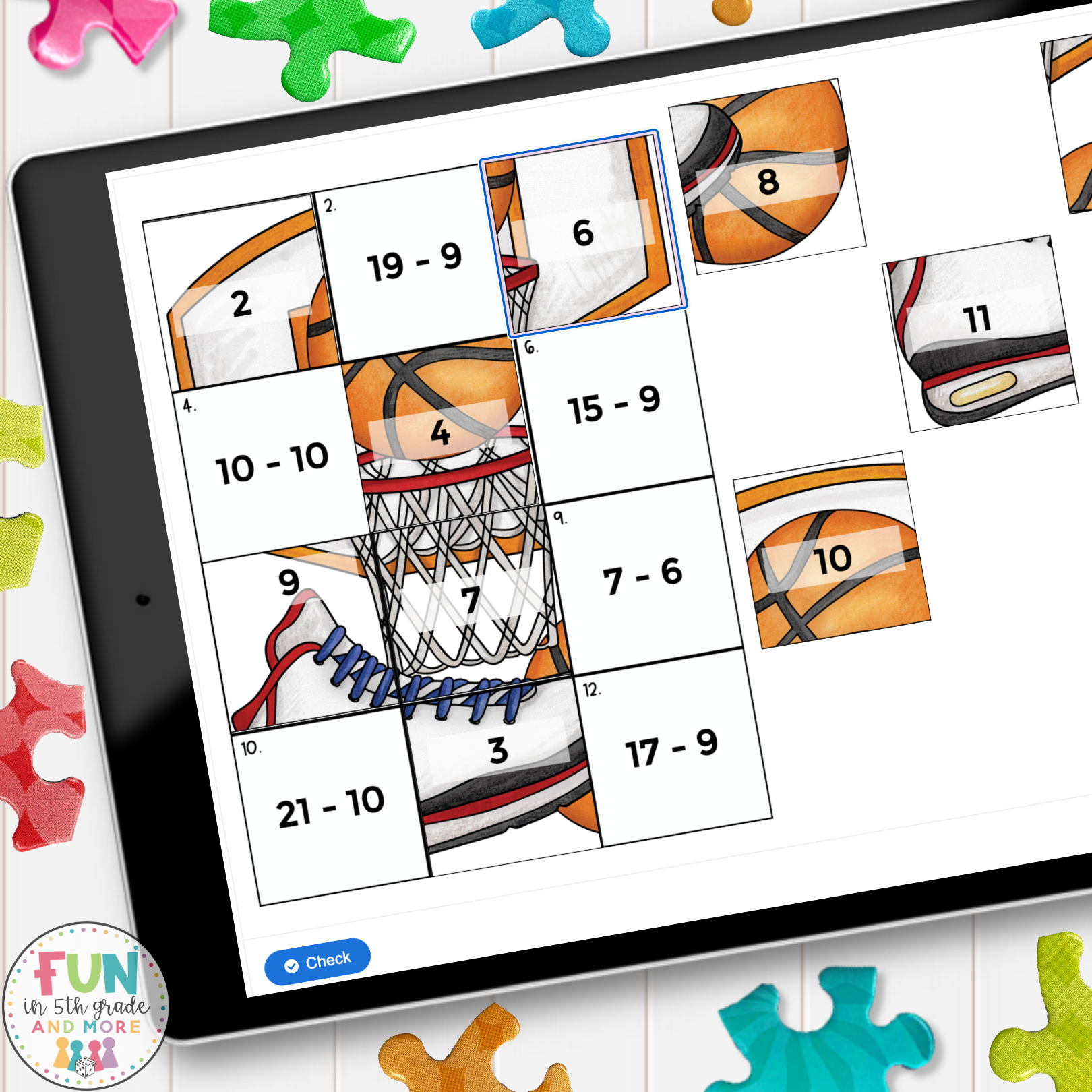
These digital puzzles ask students to match a math fact with an image that has an answer on it. If the student correctly matches the math facts and answers, the result will be a completed picture. This is a terrific option to integrate into the repertoire. It is different than other flashcard-style games because the visual cues help to provide scaffolding for students as they learn. Click the image to learn more.
#3 | Arcademics
Video games can be one of the biggest motivators for students. Arcademics combines the thrill of the win with math facts. The combination of multiple attempts, immediate feedback, and a good ol’ fashioned arcade feel gets students excited to practice.
#4 | Fact Monster
Fact Monster provides timed flashcard activities at multiple levels. The multiple levels are great for differentiating and helping students develop their growth mindset. In addition to flashcards, Fact Monster also provides resources to help explain math facts and rules to students and parents.

#5 | SplashLearn
This site has differentiated learning down to a science. Students can choose not only what operation they want to work with but also the number of questions, the numbers that will be included, the answer type (i.e., getting choices or using a keypad), and whether or not the activity has a timer.
Learning Together!
Another important fact we learned in 2020 is that children NEED social interaction. Learning on their own behind a screen is helpful, and online learning sites allow significant (and easy) differentiation but don’t forget that social-emotional learning is also important.
We need to have ways that students can work on math facts while also learning to take turns, talk appropriately to one another in a competitive environment, use manners, etc. Skills that need to be taught through practice and interactions with real people (rather than just the computer).
#6 | U-KNOW Math Games
U-KNOW games are card games students play in groups. U-Know is played with students matching color/number to the card the previous player put down. Once they put their card down, they must read and answer the question on the card. If correct, play moves on. If incorrect, the player draws 2 new cards and play moves on. Students can check answers with the included answer key so that the group can manage the game by themselves. I like to use U-Know games with students in centers or with students who finish other tasks early.
#7 | Interactive Bulletin Boards and/or Whiteboards
Cut out numbers and math symbols (+, -, <, etc) and attach them to bulletin boards or whiteboards around the room using pins or magnets. (You can also laminate them and use magnets if you want something that can be easily wiped down or sanitized.) Give students situations or equations and ask them to come up with as many ways to get the desired result as possible. For example, “Create as many problems as possible that solve for 12?” Students can then work together to manipulate the numbers and symbols into different equations.
#8 | Soccer Ball Toss

Get a soccer ball (or a couple) and write different problems in each of the hexagons. Toss the ball around the room, and students have to read and answer the problems their fingers are touching when they catch the ball. This allows students to get active while learning!
The Key is Variety
Remember, students need variety to stay interested and engaged in learning. Although we are very proud of that A+ worksheet sitting in the keepsake drawer, our students will be much more successful learning if we ask them to practice using in-class instruction, flashcards, online games, visual cues, and group activities.
Find out how I set up my math block here.
